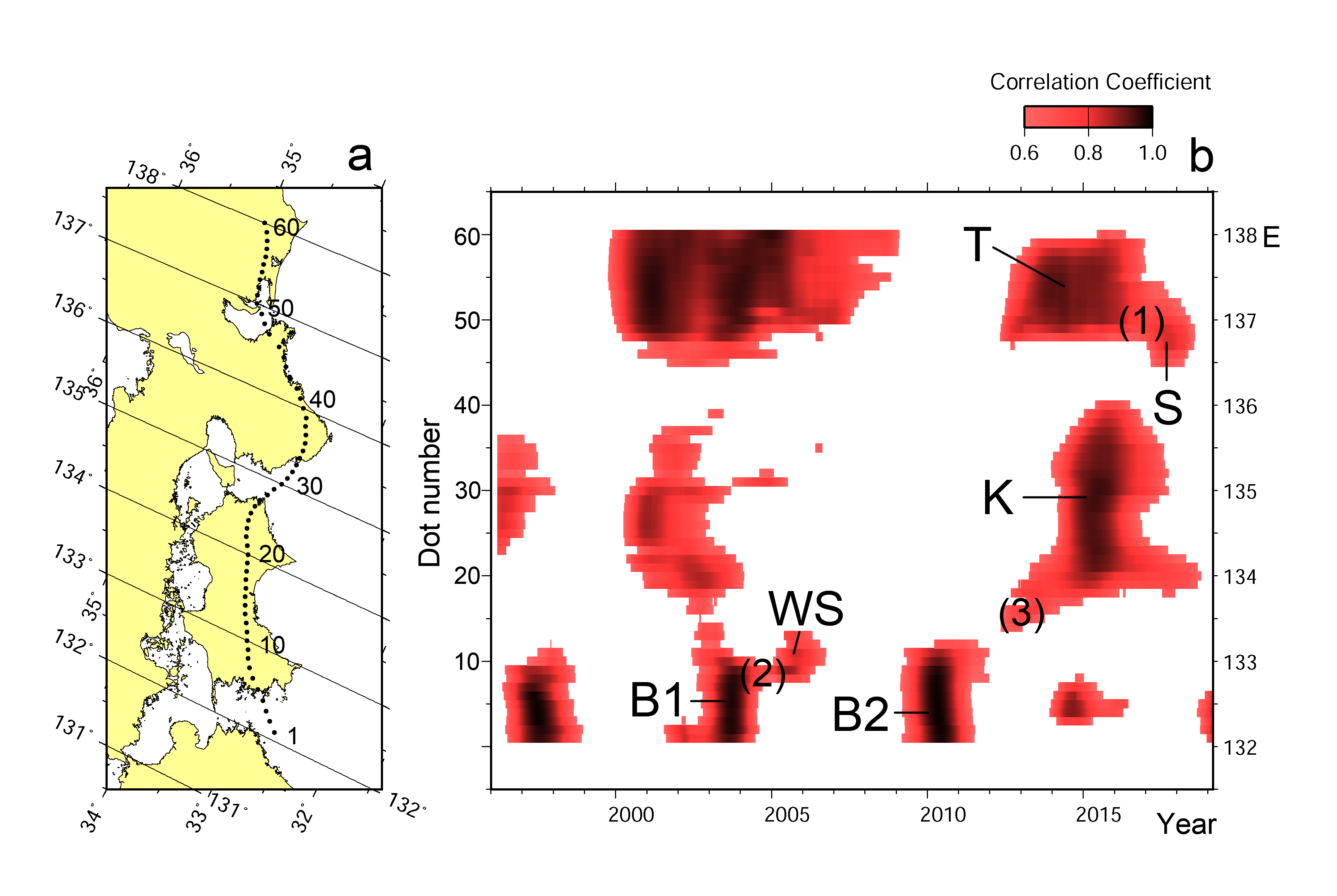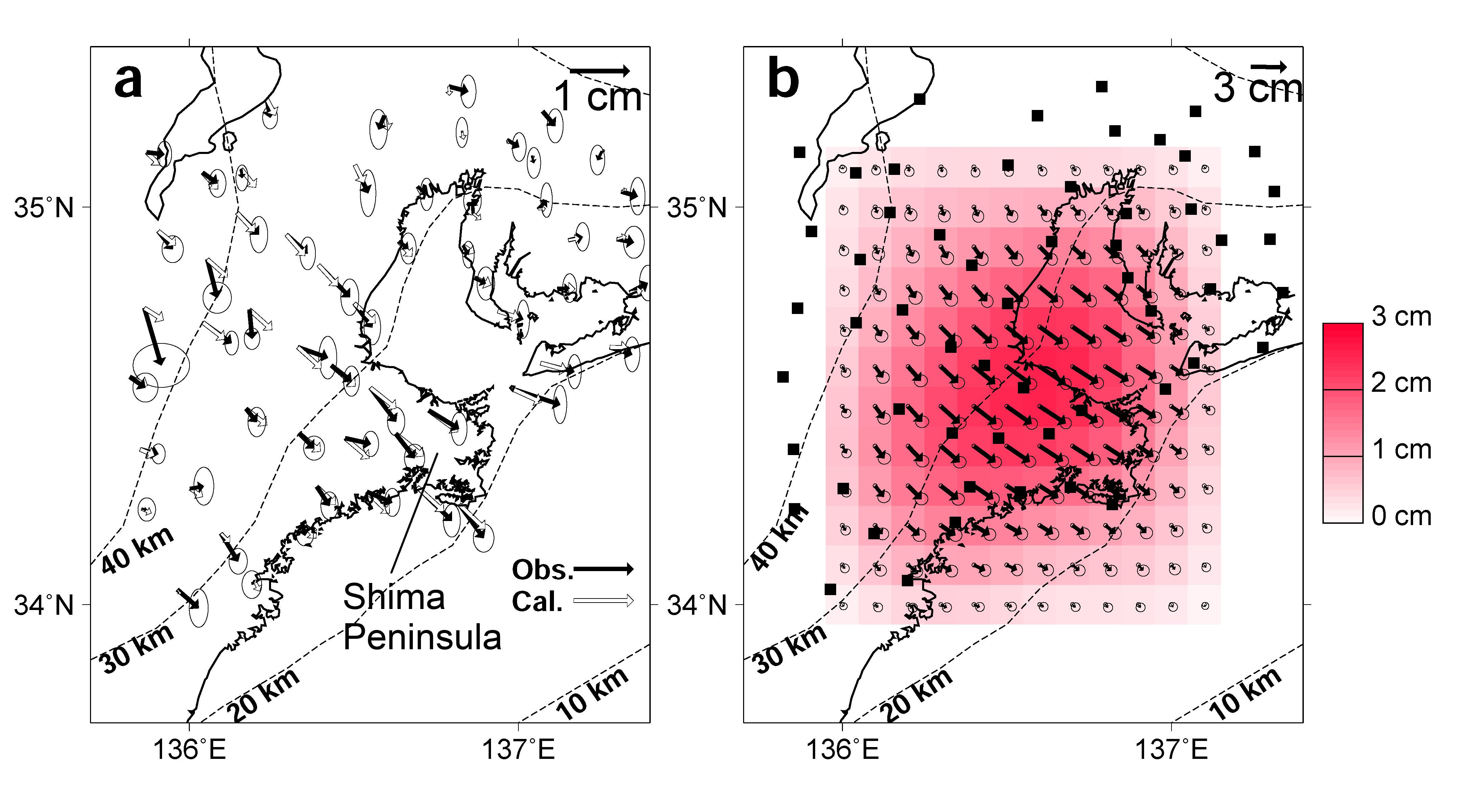GNSSの観測開始以来、紀伊半島では長期的スロースリップ(SSE)が観測されていなかった。水準と潮位による解析でも、1980〜2009年に3cmを超える有意な上下変動は見られなかった(小林、2013)。しかし、Kobayashi (2017)の長期的SSE客観検知手法を適用すると、2016年に東海長期的SSEが落ち着いた後の2017年春〜2018年秋にかけて、志摩半島に相関の高い部分が現れた。同期間に短期的SSEが活発化したため、その影響によるものではないかとの疑問があったが、ひずみ等の観測から推定された短期的SSE活発化の影響を差し引いてもMw 6.4相当の長期的SSEが志摩半島付近で発生していたことがわかった。
要旨
Long-term slow slip events (SSEs), the largest events among slow earthquakes, occur repeatedly along the Nankai Trough, southwest Japan. Their locations, near the locked zones of the plate interface responsible for great megathrust earthquakes in the Nankai Trough, suggest that these events influence conditions in this critical seismogenic region. Characterizing the spatiotemporal changes of long-term SSEs is important for understanding changes in the locked portions of the plate interface before major earthquakes. Two decades of observations by the global navigation satellite system along the Nankai Trough have detected no long-term SSEs in a large area beneath the Kii Peninsula. We report details of a long-term SSE detected in satellite navigation data from the Shima Peninsula, the easternmost part of the Kii Peninsula, from spring 2017 to autumn 2018. The estimated moment release from this event is equivalent to an earthquake of magnitude 6.4.

図 南海トラフ沿いの長期的スロースリップによる非定常地殻変動の時空間分布。

図 (a) 2017年4月から2018年10月の非定常変位と理論値、(b) 推定されたプレート境界上のすべり分布。
| 
